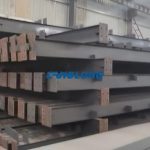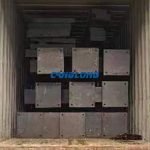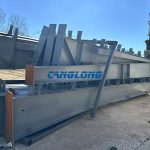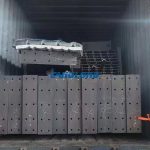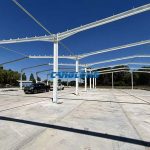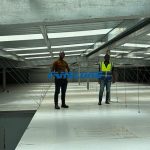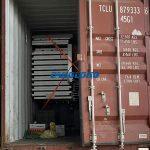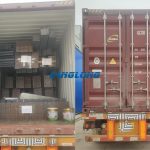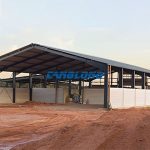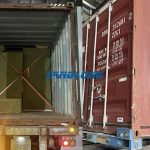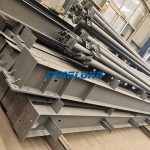Galvanized steel structures packaged and shipped to Australia
Recently, as the last truck of steel components drove smoothly out of the Canglong Group manufacturing plant, the Australian customer’s industrial shed project completed the shipment of galvanized steel structures. This shipment focuses on the dual environmental challenges of tropical drought and coastal salt spray. With fully galvanized H-shaped steel and C/Z-shaped steel kits as the main body, the quality is strictly controlled throughout the entire process from production, galvanizing to packaging and delivery, creating a corrosion-resistant, easy-to-install, and long-life industrial shed support system for customers, marking the Canglong Group’s service capabilities in the field of overseas industrial facilities.
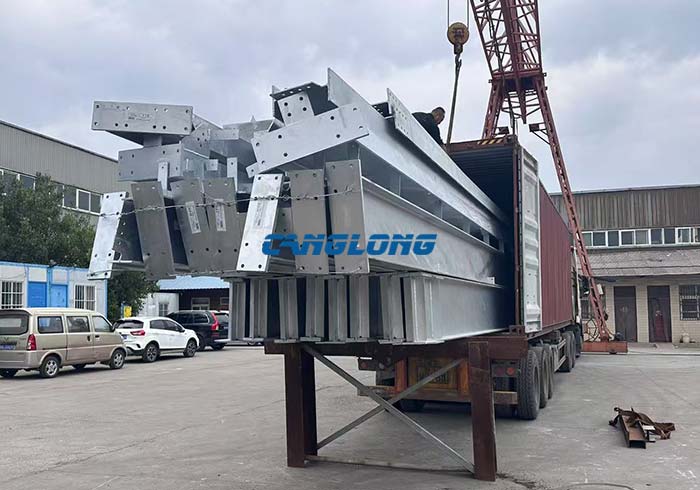
The industrial shed built by the Australian customer this time is located in an industrial park in Queensland. The local climate is characterized by high temperature, dryness and coastal salt spray. The average annual sunshine exceeds 3,000 hours, and the ultraviolet radiation is strong. Some areas are less than 50 kilometers away from the coastline, and the air contains high concentrations of chloride ions (salt spray concentration is more than 0.1mg/m³). Ordinary steel is prone to dual corrosion by electrochemical corrosion and ultraviolet oxidation in such an environment. Rust perforation may occur within 3-5 years, resulting in reduced structural strength and even safety hazards.
The technical team of Canglong Group finally selected hot-dip galvanized steel structure as the main frame of the industrial shed by analyzing the Australian Industrial Building Anticorrosion Code (AS 1720.1) and local climate data provided by the customer. The galvanized layer acts as a physical barrier to isolate the steel from oxygen, moisture, and chloride ions, fundamentally blocking the corrosion reaction. At the same time, the sacrificial anode protection of the zinc layer can further extend the life of the steel. According to calculations, the service life of the galvanized steel components used in the project can reach more than 30 years in the target environment of Australia (ordinary steel components are only 8-10 years), which greatly reduces the subsequent maintenance costs.
The H-shaped steel (section height 300-600mm, thickness 8-12mm) and C/Z-shaped steel (section height 200-400mm, thickness 2.5-4mm) shipped this time are the results of customized production and precision galvanizing of Canglong Group’s smart factory. Each component has gone through four major checkpoints: raw material inspection, fine processing, galvanizing, and finished product inspection to ensure 100% compliance with customer requirements.
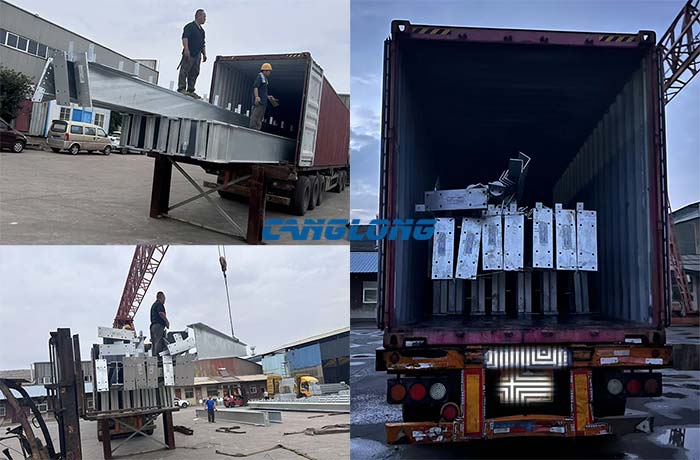
Raw materials are carefully selected: All steel materials are made of Q355B low-alloy high-strength steel (yield strength ≥355MPa) from leading steel companies such as Baosteel/Ansteel. The toughness, weldability and impact resistance are better than ordinary steel materials, and they are suitable for the large span (maximum single span 36m) and high load-bearing (single column load-bearing ≥8 tons) requirements of industrial shed.
Finishing guarantee: The factory adopts CNC flame cutting and automatic welding technology. The splicing error between the flange plate and the web of the H-shaped steel is ≤1mm, and the arc deviation after forming of the C/Z-shaped steel is ≤0.5°, ensuring the dimensional accuracy and structural stability of the components. All welding parts are tested by flaw detection (UT ultrasonic testing) to eliminate defects such as pores and cracks.
Hot-dip galvanizing process: The galvanizing process is completed in the exclusive galvanizing workshop of Canglong Group, using a standardized process of plating agent pretreatment, high-temperature galvanizing, and cooling passivation. The temperature of the zinc liquid is controlled at 450-460℃ (the industry standard is 440-450℃) to ensure uniform coverage of the zinc layer. The thickness of the zinc layer is tested by an online thickness gauge (the zinc layer on one side of H-shaped steel is ≥85μm, and the zinc layer on one side of C/Z-shaped steel is ≥70μm), which is far higher than the 65μm required by the national standard GB/T 13912. The surface of the component is smooth and there is no leakage after galvanizing. The adhesion of the zinc layer is verified by the cross-cutting test (peeling area ≤5%), and the scratch resistance is excellent.
The Canglong International Logistics team completed the preparation of more than 20 documents such as the Australian Customs Code (HS Code 7308.90.90), Certificate of Origin (FORM E) and SGS galvanized layer test report (in compliance with AS 1720.1 standard) in advance, and cooperated with the local customs clearance agent in Melbourne (cooperation for 4 years) to connect with the Port of Brisbane. It is expected that the customs clearance will be completed within 36 hours after the container arrives and delivered to the project site.
